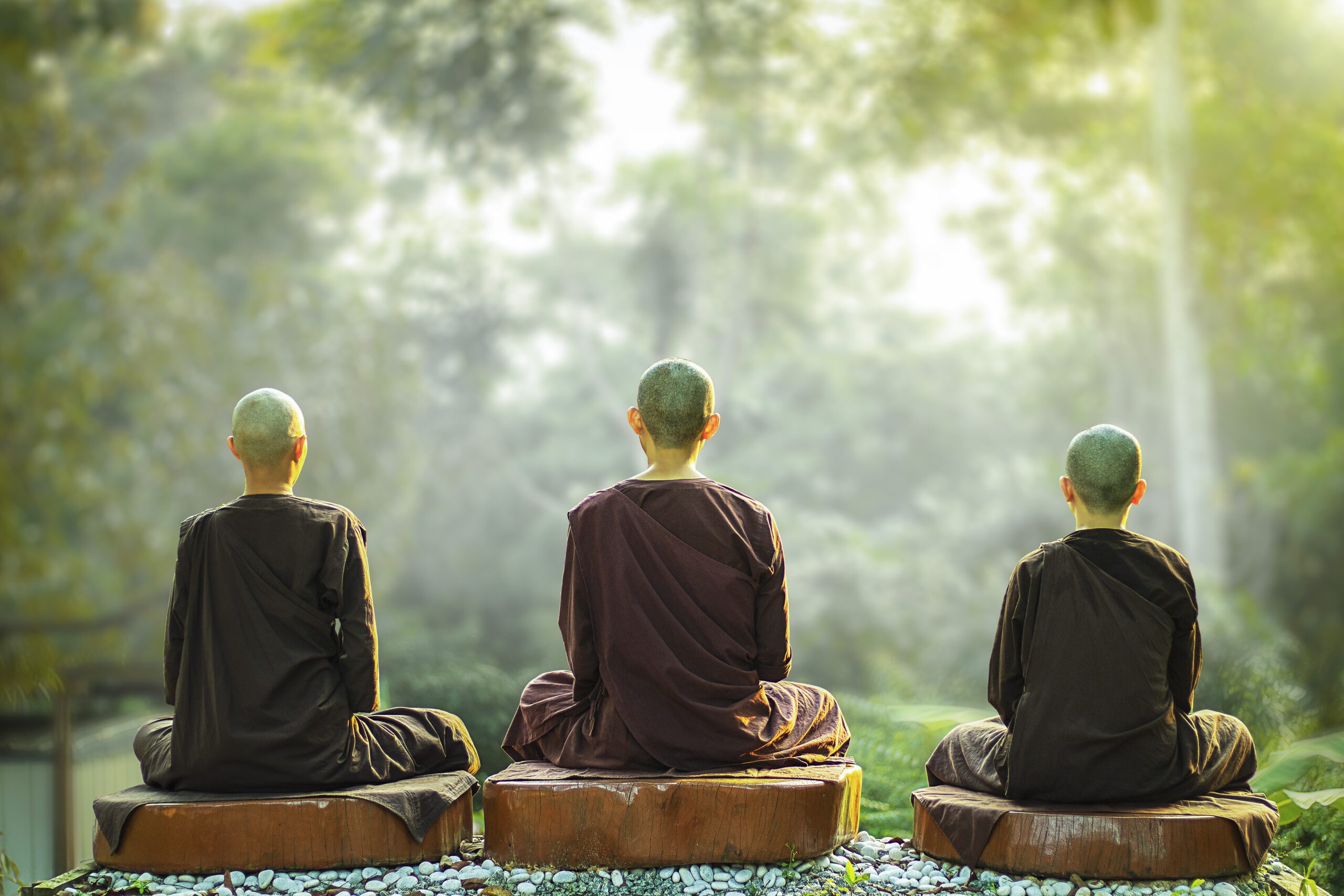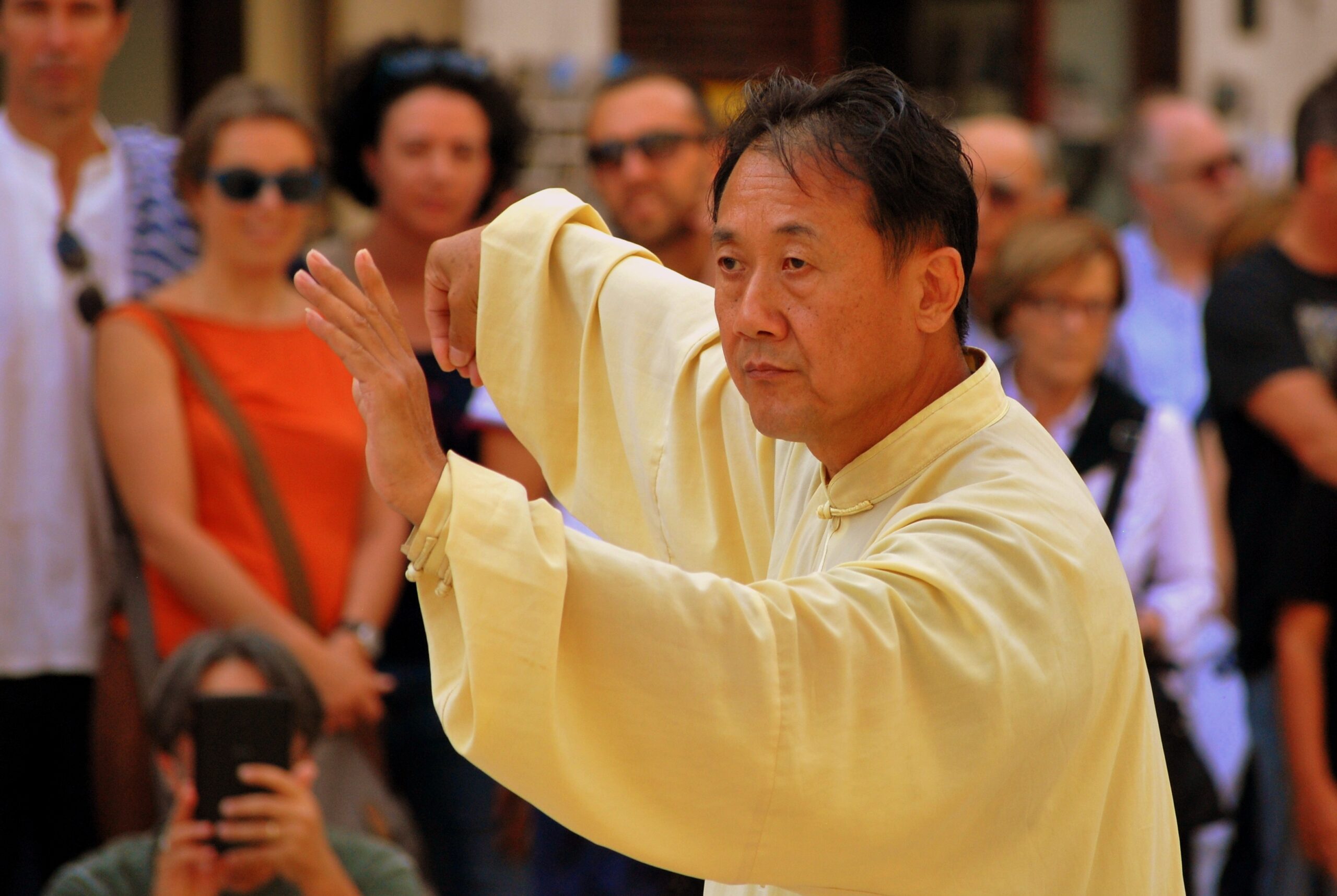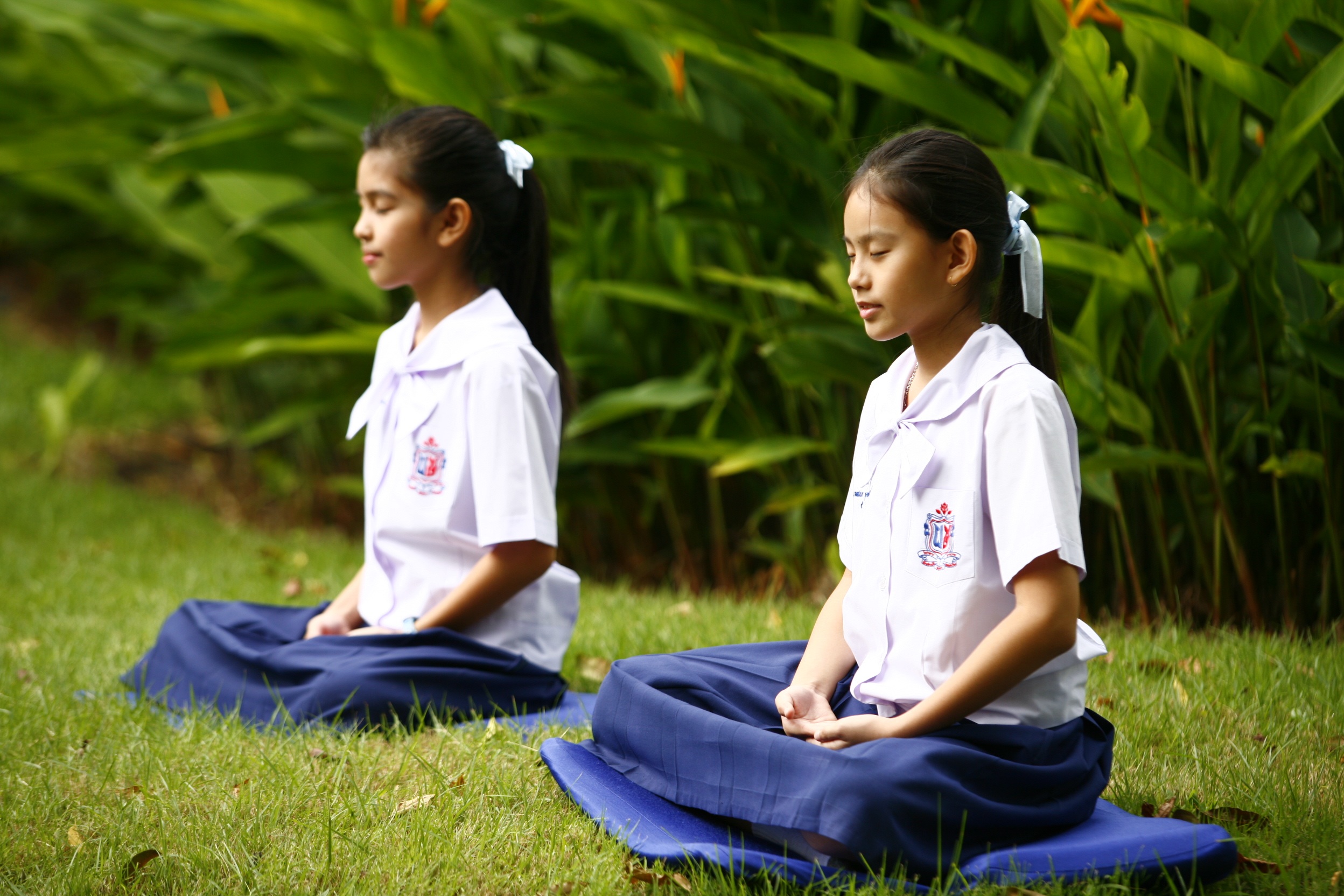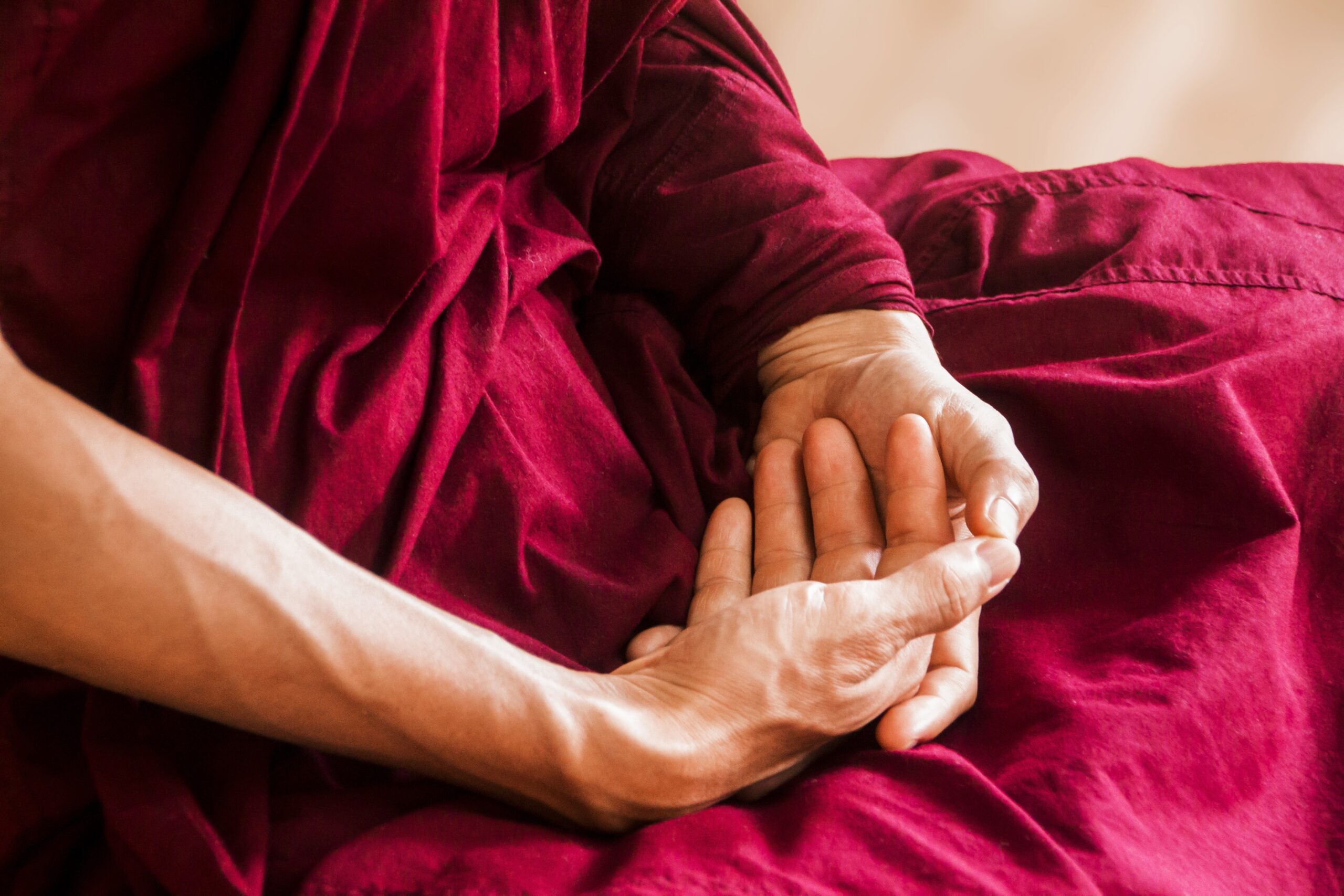Back Exercise #2: Qigong Bow Stance
Regular qigong (a.k.a. chi kung) back exercise will realign the vertebrae, promote good posture, stimulate flow of healing chi energy and gradually correct scoliosis and other back problems that cause discomfort and chronic pain.
Back pain is usually caused by poor back alignment due to poor posture and little support, but you don’t have to go to a massage therapist or chiropractor to fix your back problems. The three back pain exercises introduced on this website are simple to learn and can be practiced anywhere at home and at work.
Get used to standing properly by practicing the following qigong bow stance and the qigong horse stance. Just ten to fifteen minutes of practice every day should relieve and keep scoliosis and other back problems away.
This back exercise appears simple, but takes time to master, especially when combined with tai chi qigong movements. If you have not mastered the qigong horse stance you need to practice that one first. It is the easier of the two stances.
Steps to Qigong Bow Stance
This stance is called the Gongbu or Bow Stance because it is a stance that Chinese archers traditionally assume when they draw their bows.
- Stand with your feet together, the toes of your right foot pointing forward, and the toes of your left foot pointing out forty-five degrees away from the right.
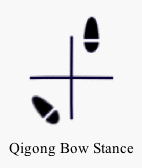 Slide the right foot forward so that the heels are shoulder-width apart.
Slide the right foot forward so that the heels are shoulder-width apart.- Then take a single step with the right foot several inches to the right to put space between your left and right feet. This should create a wide enough distance that will give you stability in your stance. The distance measuring between the two heels should be roughly about the breadth of your shoulders.
- Square your shoulders to face in the direction where the toes of your forward foot (i.e. your right foot) are pointing.
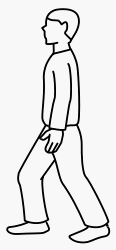
- The weight of your torso should be evenly distributed between both legs, knees slightly bent.
- The kua — part of the groin area defined by the crease between your hips and your thighs — must be indented.
- Your posture should be straight, not arched, the tail bone tucked in, shoulders relaxed. Visualize hanging from a piece of thread from the top of your head, your trunk sinking down, creating a plumb line.If you are doing this stance properly, you should find the back of your thighs are relaxed: when you pat them, they will shake. (See Back Exercise #1, the Qigong Horse Stance for more details).
- When you have mastered these steps move back into beginning position. Then slide your left foot out and begin the bow stance again, this time with your left foot forward.
Key Points to Remember:
- The kua is indented, knees are bent, weight evenly distributed.
- Visualize hanging from a piece of thread from the top of the head, rest of torso sinking down.
- The back of the thighs should feel like jelly.
So there you have it: practice this back exercise for ten to fifteen minutes a day to say goodbye to scoliosis, chronic back pain and other back problems.
This website depends on financial support generated from the inexpensive ecourses I charge and the generous donations made by people like yourself.
If you have enjoyed this free lesson, please consider helping me spread the word about this website. You can show your support by purchasing my ecourses, by sharing the website with your friends and acquaintances, by posting my link on your own website if you have one, or by making a small financial contribution in exchange for some invaluable thank-you gifts.
Thank you again for your support.
